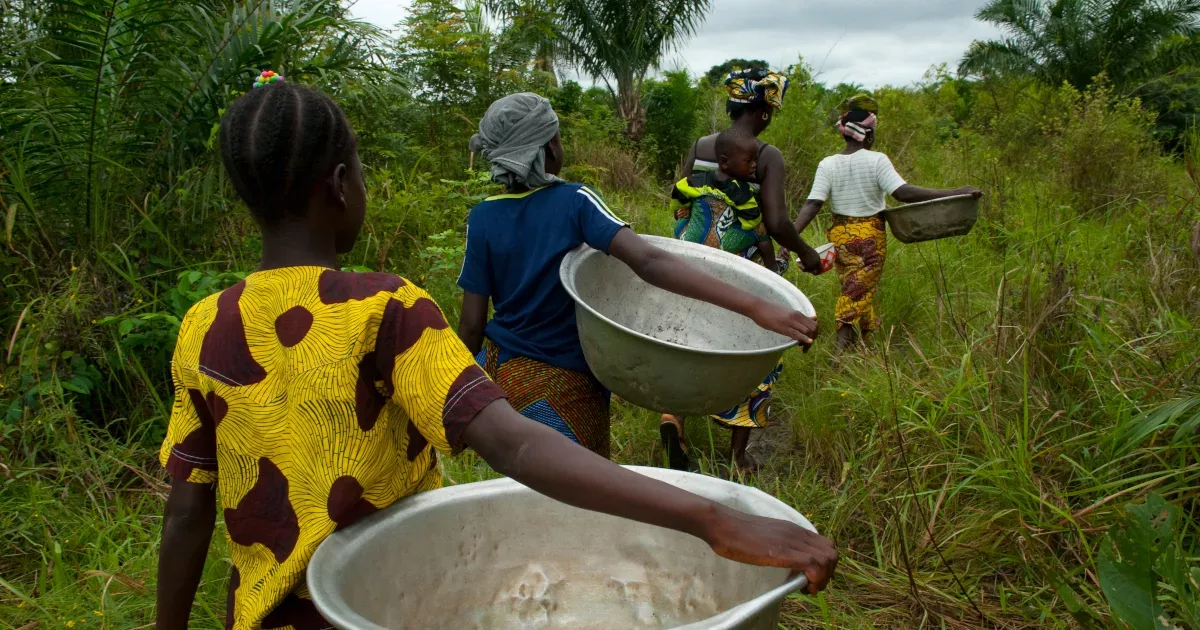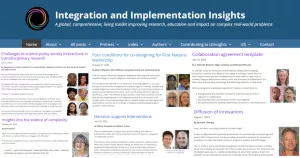Making water use fair for everybody
As World Water Day approaches, Hester le Roux highlights the link between water security, gender equality and women’s rights – and explains why the Fair Water Footprints programme is working to ensure that the water we use is truly equitable for all.

The annual World Water Day (22 March) comes close on the heels of International Women’s Day, which is marked on 8 March every year. This feels apt, given that issues affecting women and gender equality – social norms, power relations, land ownership, access to basic services, risk of violence and the like – are also hugely relevant in the spaces of water security and WASH (water, sanitation and hygiene).
Recent months have seen a backlash in some quarters against any initiatives that openly commit to include everyone in their reach, regardless of personal characteristics such as gender, age, ethnicity or ability. Such initiatives surely have admirable intentions, despite being tarred by the tainted ‘DEI’ brush.
Yet, the fact remains that water security affects different groups of people in very different ways. Any efforts to ensure better management of our collective water resources that do not make special provision for these groups, risk deepening existing inequalities and increasing potential harm to the very people whose rights they seek to protect.
This is why gender equality and social inclusion has been placed at the heart of the Fair Water Footprints initiative. Launched at the COP26 climate summit in Glasgow in 2021, Fair Water Footprints forms one part of the UK government-funded Just Transitions for Water Security programme, which aims to help countries manage water resources responsibly for the future.
Watching our water footprints
Similar to carbon footprints, a ‘water footprint’ can be a useful indicator of how sustainable a production process is from a water use perspective. Developed in 2002 by Professor Arjen Hoekstra, a product’s water footprint takes into account all the water consumed to make it, expressed in cubic metres per year. This includes ‘blue water’ (freshwater like lakes and rivers), ‘green water’ (rainfall) and ‘brown water’ (freshwater needed to dilute pollutants in post-production water to make it safe to use again).
It is thanks to this concept that we now know that it can take up to 83,000 litres of water to manufacture a car, or 10,800 litres for one pair of jeans: an extremely water-intensive process. For context, the average person in the UK uses around 150 litres of water per day.
The concept of a product’s water footprint is becoming more widely used to influence buying decisions. During the ‘Veganuary’ campaign earlier this year, I was able to compare the water footprints of different milks and milk substitutes on offer in a London coffee shop, thanks to a poster prominently displayed near the counter. (In case you’re wondering, rice milk had the lowest water footprint, while cow’s milk had the highest, with 125.6 litres of water used to produce just 200ml).
Whose water is it anyway?
However, knowing how much water is used in the products we consume is only one part of the picture. What do we understand about where the water used in the production process was sourced from, or who was affected by its use in this particular way? Which groups had less access to water as a result of the making of this product? Was any community’s only source of fresh water polluted? Were people’s WASH needs met before water was diverted for commercial use?
These are the issues the Fair Water Footprint initiative seeks to address through the Glasgow Declaration for Fair Water Footprints (PDF), which commits signatories to a number of principles, including sustainable and equitable withdrawal and water use, and zero water pollution.
The fact is, while risks to water security affect entire communities, certain groups within those communities are even more at risk: particularly those whose voices often go unheard, or who lack access to services, decision-making and empowerment.
This typically includes include people living with disabilities, the elderly, young people, LGBTQI+ communities, Indigenous Peoples, migrants or displaced communities and, unsurprisingly, women.
Women and water: an unequal burden
In many communities in the global South, fetching water is women’s work. Time spent collecting water for the household’s daily needs, on top of providing care and domestic work, leaves women and girls little time to earn money or attend school; let alone to rest. When water sources are polluted or depleted, women and girls have to walk further to collect water, also increasing their risk of harm from gender-based violence.
In many agricultural communities, women make up the majority of smallholder farmers who are very vulnerable to disruptions in their clean water access; and when their farming income is threatened, entire households are at risk of harm. These water security risks are exacerbated by the effects of climate change, which is disrupting rainfall patterns and causing more droughts and floods.
Women are also disproportionately affected by lack of access to WASH. If workplaces do not have clean, adequate and safe WASH facilities, this prevents women from realising economic opportunities and can also create gender-based violence risks.
In most sectors, women have less power and representation at work, so are less able to advocate for their needs. Girls are more likely to stay away from school if their hygiene needs are not met – with lifelong implications for their income, opportunities and wellbeing.
Ensuring no one is left behind
In light of these vulnerabilities, the Fair Water Footprint initiative has gender equity and social inclusion (GESI) baked into its very design. The four organisations jointly delivering the initiative – CDP, Chatham House, IIED and Water Witness – have signed up to a set of GESI principles that will guide all their activities. This allows GESI to become mainstream throughout the programme: from design and implementation, to stakeholder engagement and monitoring impact.
While women are not the only group disproportionately affected by water insecurity, this month’s International Women’s Day and World Water Day have helped shine the spotlight on the need for intentional and proactive inclusion of women in our water security discussions, planning and management – whether within government, business or civil society.
Let’s be clear: failing to do so threatens to make existing inequalities worse, creating a negative ripple effect that reduces the impact of all our best efforts to manage our planet’s scarce resources sustainably and fairly.
Hester le Roux
Hester le Roux is an international development consultant, currently serving as gender equality and social inclusion advisor to the Fair Water Footprints programme
This article has first been published by IIED. CC BY-NC-ND 4.0
SUBSCRIBE TO OUR NEWSLETTER
To stay up to date with our projects and the development of the EHC
Read more articles

Gian Francesco Giudice: “Ethical responsibility is essential in fundamental research”
From hypothetical black holes to environmental impact studies, CERN navigates risk, transparency, and moral responsibility at the frontiers of human

Dealing with the complexity of society and environment
A global toolkit for tackling complex problems with more than 600 different methods Ever wish you had a free toolkit

The Moon & the Global South: Voices, Risks & Promise
Researchers warn that without inclusive governance, the Moon could become “a new arena for old patterns of exclusion” When rockets

Borko Furht: “AI shouldn’t be given much autonomy without maintaining accountability”
Beyond Superintelligence: The Real Challenges of Keeping Humans ‘In the Loop’ Borko Furht is a professor in the department of